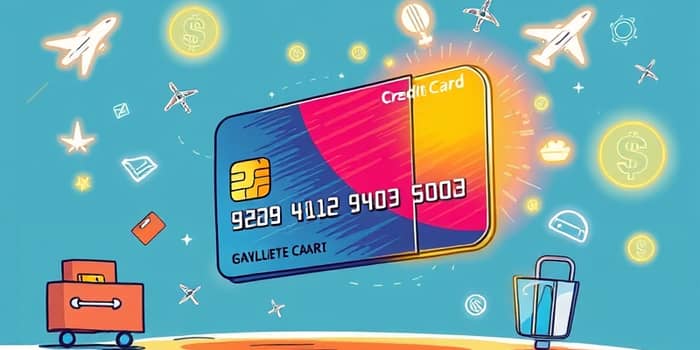Upgrading a credit card can be a powerful strategy to optimize your spending and unlock new perks without the hassle of opening a fresh account. Instead of applying for a brand-new card, you often have the option to elevate your existing account to a more fitting product within the same issuer’s portfolio. This approach can save time, preserve your account history, and align your wallet with evolving financial goals.
Whether you’re looking to increase your borrowing power or explore enhanced rewards, the process of card upgrades breaks down into two main avenues: the simple increase of your credit limit, and the switch to a different card type altogether. Each path carries unique benefits and considerations that deserve careful evaluation before you decide to move forward.
By understanding when an upgrade makes sense—and when to consider applying for a new card instead—you can make informed decisions that will serve your financial journey for years to come. Let’s dive into the essential steps, advantages, and potential pitfalls of this often-underutilized tool.
Understanding Credit Card Upgrades
Credit card upgrades typically fall into two categories, each tailored to different goals and circumstances. By recognizing the subtle differences between these options, you can choose the approach that best fits your evolving needs.
- Credit Limit Increase: A straightforward adjustment that raises your available borrowing capacity without changing the card’s core features.
- Card Type Change: A product change that moves you to a new card within the same issuer’s lineup, often unlocking new rewards structures or premium services.
When evaluating these options, pay attention to key factors:
No hard credit inquiry is required for most upgrades, helping you maintain your credit score while accessing greater financial flexibility.
Keep in mind that sign-up offers and welcome bonuses are typically off the table when you upgrade, since you are not treated as a new cardholder.
Finally, note that although the account’s age and history generally remain intact, you will receive a new card number and physical plastic to manage after the change.
How to Upgrade a Credit Card
With a clear grasp of what card upgrades involve, you can follow a structured path to request and implement your desired change.
The upgrade process is often simpler than submitting a fresh application. Here are the core steps you can expect when you decide to elevate your card:
- Contact Your Issuer: Reach out through phone or secure chat to discuss potential upgrade options and eligibility criteria.
- Review available cards and their features to ensure the new product aligns directly with your spending habits and rewards objectives.
- Complete the Upgrade Process: Follow the issuer’s prompts online or over the phone, agreeing to any revised terms and conditions.
- Activate Your New Card: When the plastic arrives, activate it promptly and update any linked payments to avoid disruptions.
Issuers may take anywhere from a few minutes to several days to process your request. It’s wise to plan ahead if you have an upcoming large purchase or travel booking to avoid timing conflicts.
Once activated, review your statements carefully and confirm that your new benefits—such as introductory APR periods or bonus categories—are applied correctly. This oversight will help you maximize the full value of your upgraded account.
Benefits of Upgrading Your Credit Card
Opting for a card upgrade can deliver a range of advantages that grow over time as you adapt your spending patterns and leverage new perks. Key benefits include:
- Better Rewards: Tailor your earning structure to your lifestyle, whether you prefer cash back, travel miles, or points.
- Access premium benefits like travel perks and purchase protections that can save you money and add peace of mind.
- No Hard Credit Check: Most upgrades are considered product changes, preserving your credit score by avoiding a hard pull.
- Retained Account History: Keeping your account open under the same issuer maintains your credit age, a factor in scoring models.
Potential Downsides and What to Watch Out For
While upgrading can be beneficial, it also carries some drawbacks you should account for in your decision-making process.
No new sign-up offers means you won’t qualify for introductory bonuses, which can sometimes outweigh the long-term benefits if you were targeting a big welcome gift.
Higher annual fees and hidden charges may apply on the new card, so be sure to compare the fee structure against any incremental value you expect to receive.
Additionally, any autopay or recurring charges linked to your old card number will need to be updated manually, creating a short window when payments might be declined.
When a New Card Might Be the Better Choice
Upgrades aren’t always the optimal path. If your primary goal is to maximize initial rewards and welcome offers, applying for a new card could deliver far greater value through lucrative introductory bonuses.
Similarly, if you need a 0% introductory APR period for balance transfers or purchases, only a fresh application will grant you that promotional rate—upgrades generally carry over your existing APR structure.
Frequently Asked Questions
Availability varies by issuer and method. Many banks offer an online portal where you can view product change options, while others require a quick phone call or chat session to initiate the process.
Account’s age and payment history remain intact, which helps preserve your credit score. The primary change you’ll notice is a new card number and updated terms.
Processing times range from almost instant approvals to several business days, depending on the issuer’s review procedures and workload. To avoid disruptions, submit your request well before any large planned expenses.
Credit Issuers and Their Upgrade Policies
Different banks have slightly varied protocols when it comes to card upgrades. Here is a concise overview:
By familiarizing yourself with your issuer’s specific policies, you can streamline the process and set realistic expectations for approval timelines.
Conclusion
Upgrading your credit card can be a strategic move to optimize your financial tools and strategy, offering a path to enhanced rewards, increased buying power, and premium benefits—all while preserving your account history. However, it’s crucial to weigh the pros and cons, compare fee structures, and plan timing around significant purchases or travel plans.
If you find that a new sign-up bonus or promotional APR would deliver greater immediate value, consider applying for a new card instead. Otherwise, an in-place upgrade could be just the solution you need to elevate your everyday spending and long-term financial goals.
References
- https://www.nerdwallet.com/article/credit-cards/how-to-upgrade-downgrade-your-credit-card
- https://www.capitalone.com/learn-grow/money-management/upgrade-or-apply-for-new-credit-card/
- https://www.chase.com/personal/credit-cards/education/rewards-benefits/upgrade-credit-card
- https://www.earnin.com/blog/getting-a-credit-card-upgrade-everything-you-need-to-know
- https://upgradedpoints.com/credit-cards/how-to-upgrade-citi-credit-card/
- https://www.citi.com/credit-cards/understanding-credit-cards/how-to-upgrade-credit-card
- https://thepointsguy.com/credit-cards/upgrade-credit-card-or-apply-for-new-one/










